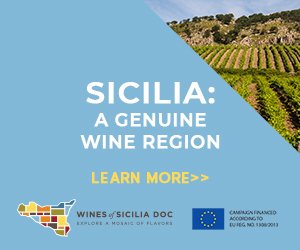What Your Chardonnay’s Hue Says About How It Was Made

[ad_1]
Widely planted around the world, this grape models just how much vinification methods can affect the character and color of wine.
Even without delving into sparkling options, bottlings can run the gamut of pale and racy to deep and rich, with a wide and happy middle ground. The color in your glass may hold clues about how the wine was made and how it will taste.
We take you through the spectrum of Chardonnay styles, from lightest to darkest.
Pale lights
Chardonnay that’s a pale gold or straw color is likely to have been aged in stainless steel. Its faint color indicates that it was made without the oxidative effect of oak, which adds both color and body.
These wines also will likely not have undergone malolactic fermentation, which adds creaminess.
Without that for balance, this style is acid-driven and fresh. Made all over the world, bottles like this are often priced affordably and intended for immediate consumption. Chablis, in northwest Burgundy, is perhaps the most famous for it.
There, it carries notes of citrus fruits, green apples, minerality and salinity. Bottlings from coastal regions in California, as well as a dwindling number of unoaked Willamette Valley Chardonnays, will carry similar characteristics.
In other parts of the world, ranging from Mendoza and South Africa’s Western Cape, to Italy and Washington State, unoaked Chardonnays may carry riper, more tropical fruit notes balanced by that signature acidity.

Starting to color
Many winemakers are looking for ways to marry some of the benefits of oak with Chardonnay’s naturally bright fruit characteristics. This can be achieved through a few techniques, or a combination: The wine only spends a little bit of time in oak; it’s aged in very large and/or neutral oak barrels; or unoaked wine is blended with oaked before bottling.
Sometimes, a portion or all of the wine will undergo malolactic fermentation, which adds creamy, buttery notes.
This style is often used for bottles with a slightly higher premium, such as Grand Cru Chablis, and those from the Côte d’Or in Burgundy, the Willamette Valley, Tasmania and Marlborough, New Zealand.
In these cooler regions, where it can be challenging to achieve peak ripeness, the technique gives wines body and a bit more longevity, while still showcasing the purity of the fruit.
Look for those same citrus, green fruit and mineral components you’d find in an unoaked bottle, along with more texture, pear and white flower notes, and sometimes a hint of vanilla or baking spice from the oak.
Golden child
This style is produced in many of the same ways as its paler cousins to the left. As winemakers look to achieve a perfect balance for their specific Chardonnay, they may find themselves incorporating a little bit more oak, and possibly more malolactic fermentation, to best support grapes that have more ripe characteristics.
These wines hail from Napa, Sonoma and California’s Central Coast, as producers there look to break the mold of consumer expectations about the state’s Chardonnay. But they also may be produced anywhere from Chile to Sicily to Australia to New Zealand’s North Island.
Generally made in warmer climates, they’ll lean into the grape’s tropical qualities, with notes of pineapple alongside ripe apple and pear. Often, you’ll be able to detect coconut, hazelnut or vanilla notes from the oak, as well as potentially some of that buttery malolactic mouthfeel.
What differentiates these wines from those deeper, darker ones is that they maintain the finesse and freshness of good acidity. The fruit is still the prevailing characteristic, not the structure or oak notes.
They can run the gamut costwise, with some affordable bottles (and boxes) intended for immediate consumption, and others that are built to age and carry a price tag that reflects that.
Going deep
There’s no way around it: This style is divisive. There’s much to enjoy about it, especially the particularly well-made bottlings. However, it’s also what fueled the Anything But Chardonnay (ABC) movement, the thing that may be on the mind of people who claim not to like Chardonnay.
These rich pours will have undergone rigorous oak treatment, often in new, well-toasted American oak barrels, as well as malolactic fermentation. They’re produced in a manner often reserved for red wines, which originates from earlier American winemakers who simply did not have a whole lot of basis in tradition to guide their Chardonnay production. It became somewhat of a signature that helped differentiate New World-style wines from Old World.
The word most often used to describe them will be “buttery,” but they’ll still carry lots of ripe pear and golden apple notes, along with a bit of tart pineapple flavor.
California is the home of this particular style, although there are a handful of compelling offerings from Washington.
[ad_2]




